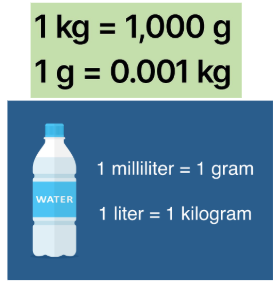Struggling to understand why you even need to learn the metric system? Like feet, pounds and gallons were good enough for your parents so they’re good enough for you? Well let’s see if I can make a compelling argument as to why it’s worth it to your future self to give meters a try!
Why do we measure?
Without measurement, there would be a lot of fistfights at the UPS store! Watch to learn about the historical evolution of measurement systems:
7 Reasons the Metric System is worth learning
1. Only 2 other countries don’t use it
And it’s unlikely you can name them or point them out on the globe. Liberia, a country founded by the US as a refuge for freed slaves after the Civil War, still uses our system. Myanmar has its own system unrelated to Metric or our Imperial system. EVERYONE ELSE talks about how many kilograms they weigh and how many kilometers they drive!

2. Most high paying US jobs are at least partially metric
If you plan to get a career in medicine, engineering, automotive, making or selling things, it would be a good idea to get familiar with metric. Since most car parts aren’t made in the US, most mechanics must be well versed in metric units to fix cars. Since healthcare is a scientific based field, your temperature, weight and height are recorded in Celsius, kilograms and meters respectively.

3. Trading of goods requires agreed upon measurement
Trading goods is the main way countries make money. So in order to maintain the world’s largest economy, we have to make things and sell them to other countries. And in order to trade, we need to have an agreed upon measurement (like 1 kilogram) for an agreed upon price (like $10).

4. Most objects are labeled with metric already
Metric units ARE the international units of trade. So oranges are bought and sold in kilograms, olive oil is bought and sold in liters and rope is bought and sold in meters. So unless an object is made and sold exclusively in the US, it’s labeled in metric and imperial units already. Additionally, since nutrition is a scientific field, all of our food labels are also in metric.

5. Most sports compete in metric
Ever watched a track or swim meet? Well all those athletes compete in metric distances like the 100m dash and 200m freestyle. Competitive weightlifting is done in kilograms and the dimensions of all gymnastics equipment is in meters and centimeters too!

6. Most of us don’t understand our own system
7. Metric is based in 10 so there are no fractions!
Let’s be honest, no one likes fractions! So the fact that we have to add 123/4” and 225/8” to build things is so much mental math and leads to wild errors that just don’t happen when adding 12.75cm and 22.62cm.

So why haven’t American’s switched over if metric is so great?
We tried! The Metric Conversion Act of 1975 was supposed to send the US on a completely metric path, but it was voluntary so no one did it. Why?
1. It would cost an enormous amount of money
Conversion to metric wouldn’t just happen in classrooms. Everything that is measured would have to be recalibrated to completely different units including:
- 168,000 gas pumps recalibrated to LITERS
- 36,536 grocery stores with dozens of scales each recalibrated to KILOGRAMS
- 4.2 million miles of road signs dug up, remeasured and converted to KILOMETERS

2. The public is super resistant
Our complicated Imperial system just doesn’t convert well to metric so Americans are confused by it. My grandpa used to proclaim that you buy lumber in 2in by 4in pieces so how in the world are you supposed to build houses in metric!?!?! Like they don’t build anything in the 192 countries!

3. We don’t HAVE to, for now…
With third biggest landmass and population and the current largest economy in the world, American’s are something most companies have to get along with. But in the event any of those things changes, we might be wishing we spoke metric a little more clearly.

Are there any consequences for our resistance?
- Labeling for US is more costly with double units.
- Companies are choosing to employ engineers from countries with metric background for fear of conversion errors.
- Americans struggle to travel and communicate with other countries due to the measurement barrier.
So, did I convince you to give metric a try? Check out the next lesson to learn how!


